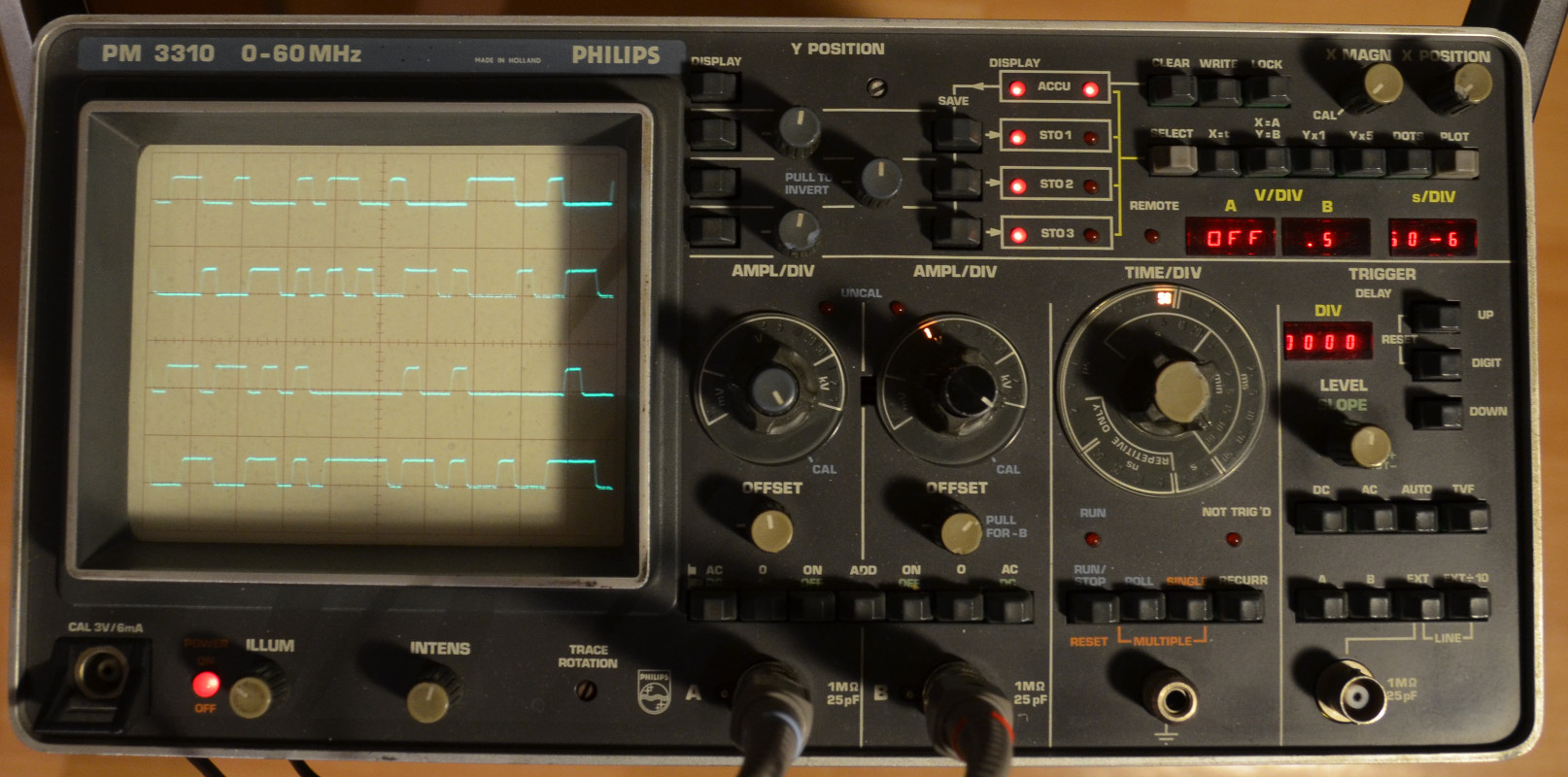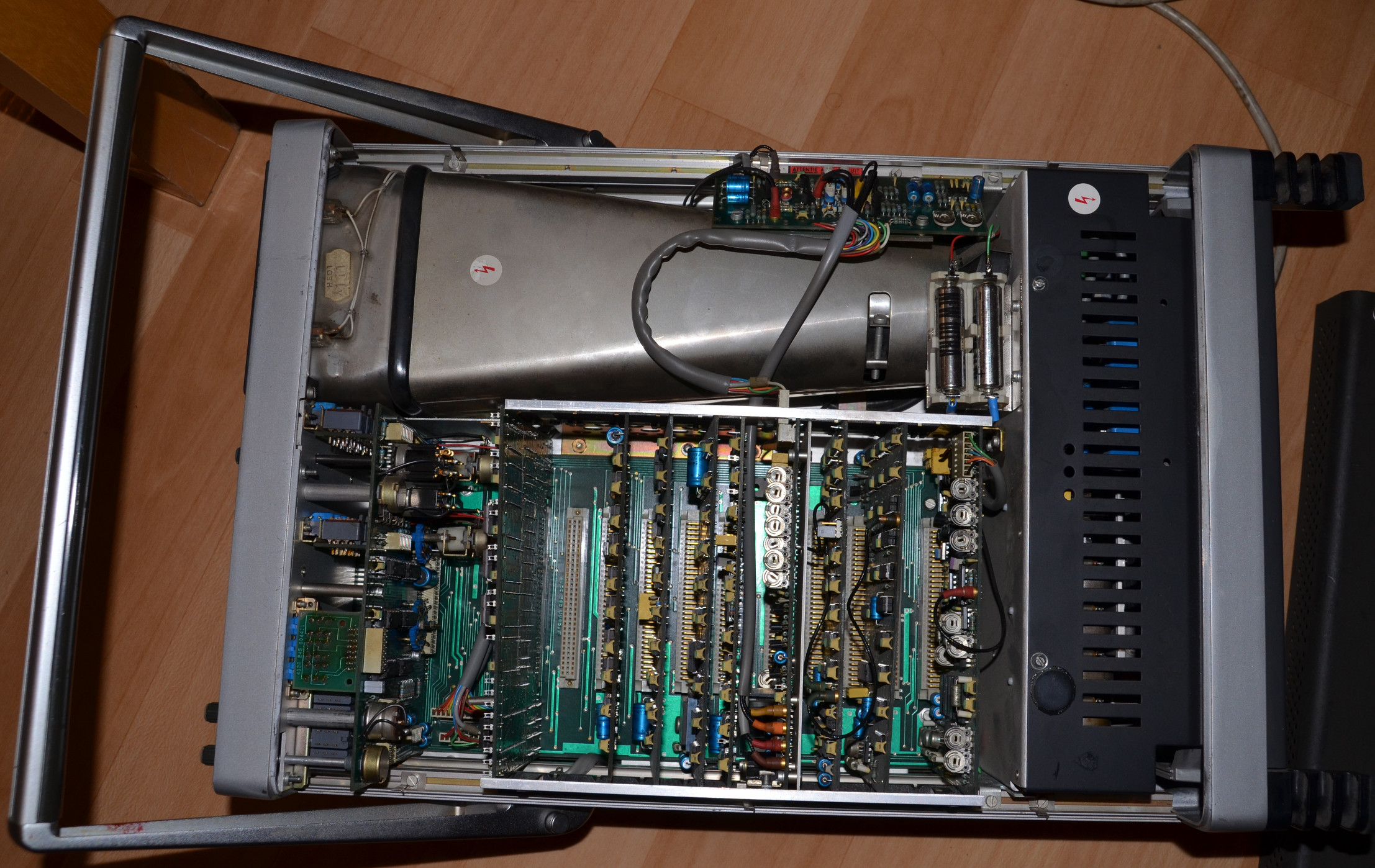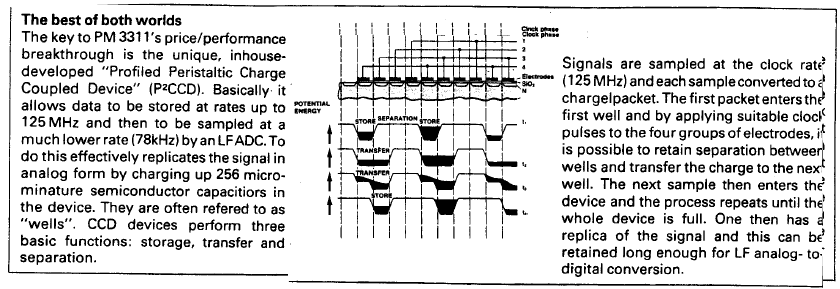I got myself an old Philips PM3310 Digital Storage Oscilloscope (DSO). The scope has a classic CRT screen, but otherwise it is a fully digital device. The scope has two channels. Analogue bandwidth of the input attenuator/amplifier is 60MHz, which is not bad at all. Sampling frequency in real-time mode, however, is only 50 Mega samples per second. Each sampling ‘run’ after a trigger stores 256 samples into a RAM. The sample RAM has capacity for 4 independent waveforms. The 50M sampling speed allows single-shot time base up to 500ns/div, and a recurrent time base up to 5ns/div (sampling of repetitive signals in equivalent time). The internal CPU switches between the modes as needed.
Sampling speed of this DSO is funny in today’s terms, although in mid-80 when it was designed it must have been quite good. The DSO uses unique Philips-proprietary “Profiled Peristaltic Charge Coupled Device” (P2CCD). It allows storing of an analogue signal into a serial analogue-like shift register with the sampling speed up to 50M samples/second (125MS/sec in PM3311). After a waveform is completed the ‘register’ is sequentially read out and sampled using a normal A/D converter at a much slower rate 78kHz, and stored in a digital RAM.
There is an interesting project at http://ringwelt.de/index.php/messgeraete/16-oszilloskop/37-oszilloskop-pm3311.html. It describes a home-made USB adapter for the PM3311 oscilloscope. Captured waveforms can be sent to a PC.
Links:


